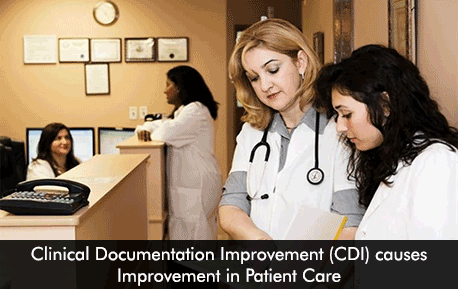As healthcare providers are moving towards value-based care, it is critical to utilize data that needs to be captured and documented correctly. Clinical Documentation Improvement (CDI) helps to make possible that all events in the patient encounter are captured properly and the EHR Software clearly shows the services that were offered to the patient. Accurate diagnosis can greatly improve patient outcome levels and clinical documentation improvement can reduce documentation errors.
The Importance of CDI Programs in Healthcare
The American Health Information Management Association (AHIMA) explains on its website, that clinical documentation improvement programs can help to support the precise depiction of the patient’s clinical status. This clinical status is the coded data which is later translated into meaningful quality reporting, public health data, and clinicians report cards. CDI also facilitates that the entire members in the care team get the right information about the patient, this keeps teams well informed and in sync about the patient they are caring for.
When a CDI program is implemented claims can be filed on time and this can combat the issue of denied claims. There are financial benefits of clinical documentation improvement. 90% of hospitals with outsourced clinical documentation processes realized gains of $1.5 million in appropriate claims revenue and claims reimbursements according to a 2016 report released by the Black Book Market Research fund. There is a boost in practice revenue as errors are reduced and medical coding is accurate.
CDI and Improvement in Patient Care
Medical records can be improved in hospitals through complete and accurate documentation with the help of CDI. Clinical documentation captures complete details of patient care from hospital admission to discharge. This also includes diagnosis and treatment. When this documentation is clear and precise it helps to rule out any confusion and also improves communication between healthcare providers. On the other hand, if this documentation is inaccurate then it could diminish the quality of patient care which can lead to medication errors, longer stays at the hospitals, and higher re-admission rates.
Physicians also have to deal with long hours with Electronic Medical Records (EMR) software data entry and administrative tasks which cuts down their quality time with the patient. Clunky EHR software designs keep the provider overworked. However, workflow documentation tools such as pre-structured data elements can streamline the documentation process providing an opportunity for the doctor to focus on patient care which is the ultimate goal of healthcare.
Moving Ahead
Natural Language Processing (NLP) tools can help to speed up the documentation process by improving the current voice recognition technology features in EHR Software systems. The provider’s experience with their software will improve and they can provide high-quality patient care.







